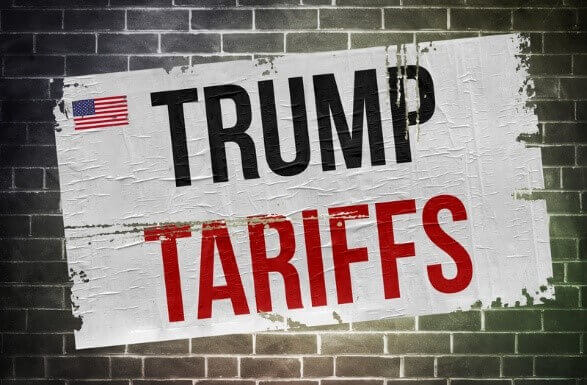About EMBA 2025
In today’s VUCA (volatile, uncertain, complex, and ambiguous) world, organizations must stay attuned to both local and global developments. To better prepare for emerging challenges, JCCI-EDI continues to address critical issues in the business world through its Executive MBA program.
This 12-session leadership program, running successfully for over a decade, invites senior leaders to deepen their understanding of pivotal topics such as geopolitics, artificial intelligence (AI), sustainability, and cybersecurity. Each year, the program focuses on timely and impactful themes for the business landscape.
For 2025, these four topics will be integrated into the program, ensuring participants gain a comprehensive understanding of these critical areas and their implications for organizational success.
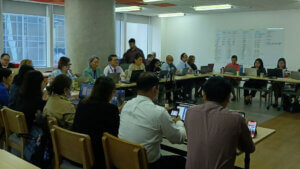
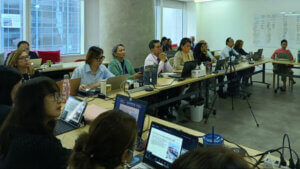
“America First” Once Again
Donald J. Trump was sworn in for a second term as the President of the United States on January 20. Speculation abounds on how his second-term agenda will affect the world order. During his first term as president, a major focus of his “America First” economic agenda was addressing imbalances with trade partners and protecting jobs for American citizens. Then-President Trump sought to reduce the U.S. trade deficit, especially with China, by imposing tariffs on various imported goods. These tariffs were designed to protect American jobs and industries and to address unfair trade practices perceived as harmful to the U.S. economy.
The tariffs received bipartisan support, as China was exporting five times as many goods to the U.S. as it imported. Additionally, there was speculation that China had pirated U.S. intellectual property through partnerships with U.S. firms.
The first session of the 2025 EMBA program discussed the case study, “The U.S.-China Trade War: Deal or No Deal.” This session explored the current trade relationship between the United States and China and how it could be affected by Donald Trump’s re-election. In his first term, President Trump imposed tariffs on imported goods as part of his broader economic agenda to prioritize “America First.”
The discussion highlighted how, in the 1970s, the U.S. initiated globalization to leverage nations’ comparative advantages, thereby increasing efficiency and welfare. While this led to the loss of American manufacturing jobs, the benefits, including expanded markets, innovation, and lower consumer costs, were seen to outweigh the costs. However, globalization also presented challenges, particularly for low-skilled workers and manufacturing communities.
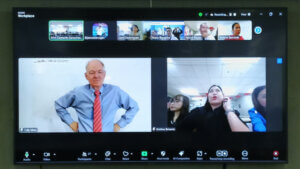

Effect of Trump 1.0 Tariffs
President Trump has indicated that one of the first actions of his second term will be to sign an executive order imposing a 25% tariff on goods imported from Canada and Mexico, as well as an additional 10% tariff on goods from China (potentially increasing tariffs on Chinese goods to as much as 60%). Furthermore, there is a proposed blanket tariff of 10–20% on goods from other countries. These measures reflect a continuation of his protectionist policies.
As a result, U.S. companies have been forced to alter how they do business in China to navigate these risks. Many firms are scaling back operations in China, moving production to countries such as Vietnam and Cambodia, or even relocating operations closer to home in the U.S. Some companies are also diversifying their supply chains to reduce dependence on China and stockpiling goods in anticipation of increased tariffs.
The effects of these tariffs were analyzed in Thomas Stackpole’s article, “What the Last Trump Tariffs Did, According to Researchers” (HBR, December 2, 2024). The article noted that the tariffs did not reduce the cost of goods imported from China. Instead, U.S. importers and consumers bore the financial burden of the tariffs. It was hoped that the tariffs would encourage U.S. companies to bring manufacturing jobs back to the U.S., but this outcome did not materialize.
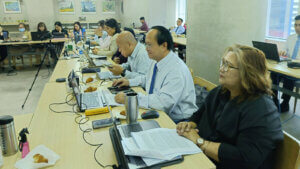
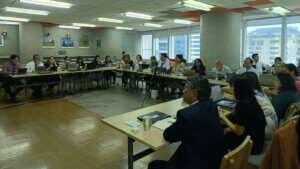
Trump 2.0 and the Philippines
The second half of the session focused on how Trump’s return to the White House could impact the Philippines. Participants discussed potential opportunities for the Philippines to position itself as an alternative to China for exports and foreign investments. While the tariffs pose risks such as supply chain disruptions and currency weaknesses, it was agreed that the Philippines should take a proactive approach to capitalize on the situation.
Participants also debated whether President Marcos of the Philippines had struck the right balance in his diplomatic approach to the U.S. and China. The groups generally concluded that Marcos should take a firmer stance against China, especially regarding the West Philippine Sea disputes, and strengthen ties with the U.S., particularly in security matters.
This session encouraged participants to think critically about the implications of President Trump’s second term and how the Philippines can leverage the continued pressure on China to create opportunities and mitigate risks over the next four years.
Stay Ahead of Global Business Trends
Gain deeper insights into the effects of Trump’s tariffs and the evolving trade landscape by exploring the latest discussion from the EMBA 2025 session. For business leaders seeking strategic guidance in these uncertain times, John Clements offers expert solutions to help you navigate complex challenges.
Contact us today to learn more about how we can support your organization’s growth.

